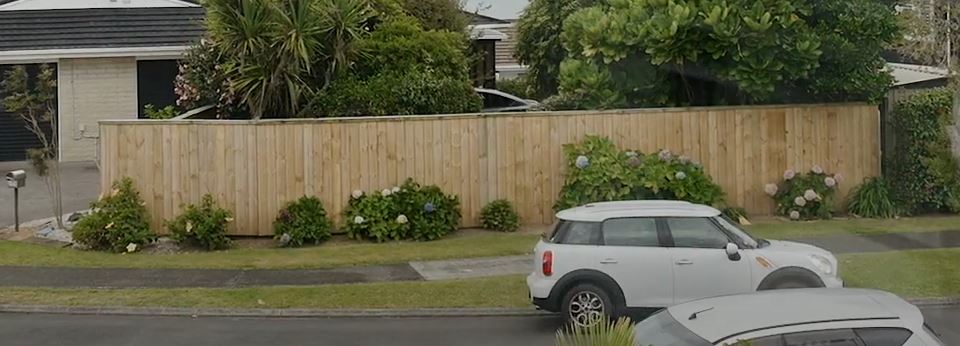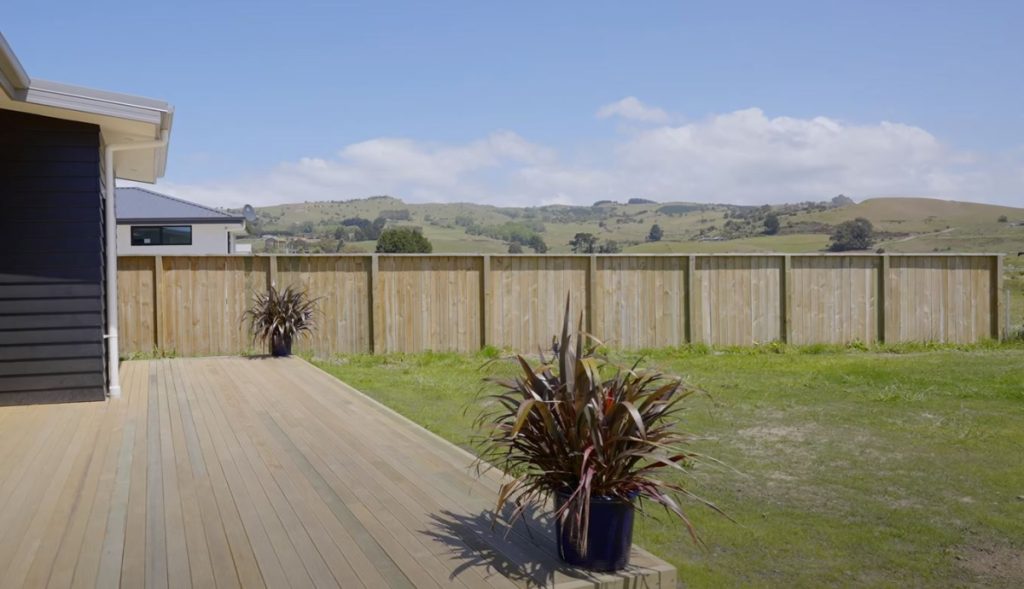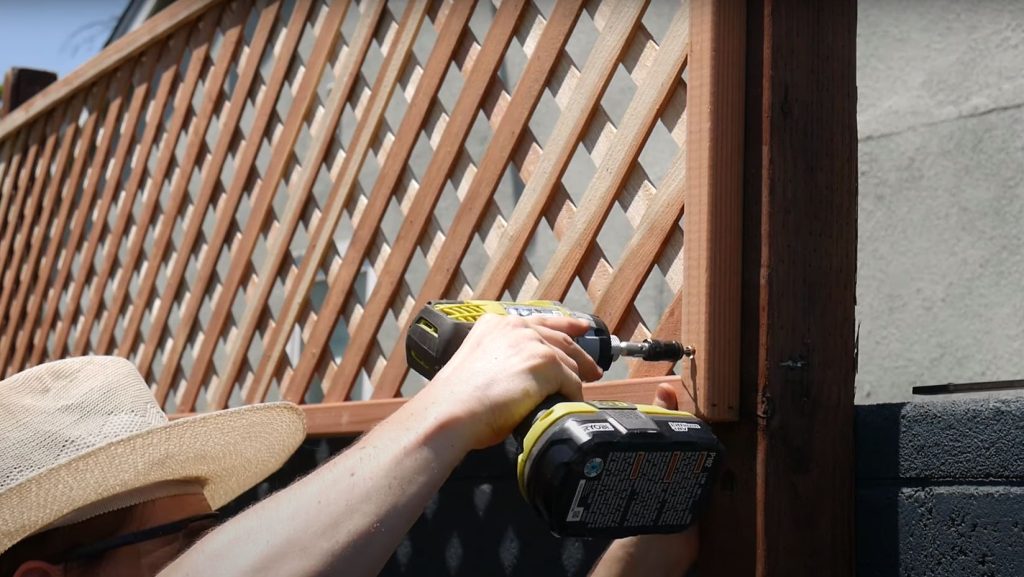Navigating the world of fencing, particularly in Hamilton and the wider Waikato region, requires a good grasp of materials, local regulations, and an understanding of the land’s nuances. In this guide, we’ll delve into the essentials of installing a wooden fence, from selecting the right wood and anchoring posts to respecting local bylaws and understanding the unique soil conditions of the region.
Necessary Materials and Tools:
To embark on your fencing journey in Hamilton, starting off right means having the proper materials and tools at hand. Here’s a technical breakdown:
Wooden Planks or Panels:
Depending on the desired fence style, this could range from tightly placed planks for privacy to spaced-out pickets.
Types of Wood:
Selecting the right kind of wood is the first step in ensuring a durable and attractive fence. The choices usually boil down to:
- Hardwoods: Such as oak, teak, and mahogany, these are dense and highly resistant to pests and rot, making them a long-lasting choice. However, hardwoods are typically more expensive than their softwood counterparts.
- Softwoods: Pine, cedar, and spruce are among the most popular softwoods used in fencing. Particularly, cedar is favoured in the Hamilton area for its natural resistance to moisture and insects.
- Treated Wood: Some woods undergo pressure treatments to enhance their resistance to insects and decay. This process involves impregnating the wood with chemical preservatives.
Styles and Dimensions:
Based on purpose and aesthetics, wooden planks and panels can be fashioned into various styles:
- Privacy Fence Panels: Usually between 1.8 to 2.4 meters in height, these panels offer maximum privacy. They often come in the form of solid panels without gaps between the planks.
- Picket Fences: Characterized by evenly spaced vertical boards called pickets. These are generally shorter, around 1.2 meters, and are popular in residential areas of Hamilton, such as Hillcrest, for their charming aesthetic.
- Horizontal Fences: An emerging trend where boards are laid out horizontally rather than the traditional vertical style. This design can make a yard look more expansive.
- Louvered Fences: These have angled slats that allow for air flow and a limited view into the fenced area. Perfect for areas like Silverdale where a gentle breeze is appreciated.
Finishing and Protection:
The final appearance and longevity of a fence are greatly influenced by its finish:
- Staining: Wood stains enhance the natural grain of the wood while offering protection from UV rays. They come in a variety of tints, allowing you to achieve the desired look while preserving the wood’s character.
- Painting: Offers a uniform appearance and can be a method to blend the fence with the home’s exterior colour scheme.
- Sealing: Especially vital for areas in Hamilton with higher humidity. A good sealant protects the wood from moisture, thereby preventing rot and mould growth.
Remember, while the design and aesthetics are pivotal, it’s equally crucial to consider the wood’s durability and maintenance requirements, especially in regions with changing weather patterns. The right choices ensure a fence that stands the test of time and elements.
Fence Posts: The Pillars of a Sturdy Fence
Materials and Types:
Fence posts, often overlooked, serve as the foundational anchors for the entire fence. The material and type of fence post you choose can significantly affect the durability and stability of the fence.
- Wooden Posts: These are the traditional choice, especially for wooden fences. Popular wood types for posts include cedar, redwood, and pressure-treated pine, known for their resistance to rot and pests.
- Metal Posts: Made usually of steel or aluminium, they offer exceptional strength and durability. They’re often used in conjunction with wooden panels for a sleek, modern look.
- Concrete Posts: Extremely durable and resistant to rot, insects, and fire. They can be a bit more labour-intensive to install but offer a long lifespan.
Dimensions and Spacing:
The dimensions of a fence post play a significant role in ensuring the fence’s stability.
- Depth: It’s a rule of thumb in Hamilton and many parts of Waikato to plant fence posts at least 600mm deep for standard residential fences. For taller fences or those in areas with strong winds, deeper post installations might be required.
- Diameter: Common diameters range from 75mm to 150mm, with thicker posts offering more support.
- Spacing: Typically, posts are spaced between 1.5 to 3 meters apart. The exact distance can vary based on the fence design, the weight of the materials, and local conditions in areas like Rototuna or Chartwell.
Setting and Installation:
The process of setting a fence post is critical to the longevity and stability of the entire fence.
- Concrete Footing: Mixing and pouring concrete around the post ensures it remains upright and resists shifting over time. This is especially essential in areas with unstable or soft soil.
- Gravel Base: Before pouring concrete, it’s a common practice in places like Dinsdale to add a gravel base at the bottom of the post hole. This aids in drainage and prevents wood rot at the base.
- Post Caps: These are protective coverings or decorative elements placed on top of fence posts. They prevent water from seeping into wooden posts and can add a stylish finish to the fence.
Maintenance and Replacement:
Fence posts, especially wooden ones, require periodic checks and maintenance.
- Inspect for Rot: Regularly check the base, especially if the fence post is in a damp area like Forest Lake. Catching and treating rot early can prolong the life of the post.
- Reinforcement: If a post becomes loose but isn’t rotted, it can often be reinforced rather than replaced. Metal splints or stakes can be used to add stability.
- Replacement: If a post is significantly damaged or rotted, it’s best to replace it promptly to prevent the entire fence from collapsing.
In essence, fence posts are to a fence what foundations are to a house. Investing time and resources into choosing, installing, and maintaining them will ensure your fence stands tall and firm for years to come.
Other Materials and Tools:
- Concrete or Rapid-set Cement: Used to set fence posts securely in the ground.
- Gravel: Placed at the base of post holes for drainage, preventing rot.
- Post Caps: These protect the tops of posts from weather, prolonging their lifespan.
- Galvanized Nails or Screws: Resistant to rust and essential for securing the wooden elements together.
- Cross Braces & Rails: Horizontal elements providing additional fence support.
- Staples & Wire (optional): Required if you’re considering adding a mesh behind your fence, especially useful in suburbs like Claudelands, where one might want to keep smaller pets from escaping.
- Safety Gear: Safety goggles, gloves, ear protection, and a dust mask are must-haves.
- Essential Tools: A hammer or nail gun, shovel or post hole digger, spirit level, saw or power saw, measuring tape, string line, and a wheelbarrow.
Pre-Construction Considerations:
Soil Conditions in the Waikato and Hamilton:
Overview of Soil Types:
The Waikato region, with Hamilton at its heart, boasts a diverse range of soil types thanks to its varied topography and climatic conditions. From the rich alluvial plains to the peat-filled lowlands, understanding the region’s soil can greatly influence construction and farming decisions.
Alluvial Soils:
These soils are predominantly found in the floodplains of the mighty Waikato River and its tributaries, weaving their way through suburbs like Hamilton East and Claudelands.
- Characteristics: Alluvial soils tend to be deep, fertile, and well-draining. They’re formed from sediment carried by water and deposited over time.
- Impact on Construction: They’re generally stable for construction but can be prone to shifting if not adequately compacted or if exposed to consistent water flow. When considering fence installations, deeper footings might be required to ensure stability.
Peaty Soils:
Regions like the Hauraki Plains and parts of Te Rapa are known for their peat-dominant soils.
- Characteristics: Peaty soils are organic-rich but can be unstable because of their high water content. They are also acidic and can compact over time, causing the ground level to drop.
- Impact on Construction: Peaty soils can present challenges for building. Ensuring solid foundations, like concrete pilings or reinforced footings, is crucial. For fencing, this means extra care in post-setting to prevent tilting or sinking over time.
Volcanic Ash Soils:
Certain parts of Waikato, especially towards the south-east, have soils formed from volcanic ash, reminiscent of the region’s geothermal history.
- Characteristics: They tend to be free-draining, making them less prone to waterlogging. However, they can be less fertile than other soil types in the region.
- Impact on Construction: Generally stable for building projects, but can vary in density and compactness. Fence installations may require added nutrients or soil amendments if plants or shrubs are intended to accompany the fence line.
Loamy Soils:
Found in pockets throughout Waikato, including areas around Morrinsville and Cambridge, loamy soils are a balanced mix of sand, silt, and clay.
- Characteristics: Loamy soils strike a balance between moisture retention and drainage, making them among the most fertile and coveted for agriculture.
- Impact on Construction: Their balanced nature makes them relatively stable for construction. For fencing, this means regular post-setting practices can be employed without much deviation.
Local Challenges:
The diverse soil conditions in the Hamilton and Waikato region have led to some unique challenges:
- Flooding: Parts of Hamilton, like the Flagstaff area, can experience occasional flooding, affecting soil stability.
- Subsidence: Areas with peaty soils can face ground subsidence, impacting long-term construction projects and fence stability.
- Erosion: The banks of Waikato River, especially near suburbs like Pukete, can be prone to erosion, especially during heavy rains.
In summary, understanding Hamilton and Waikato’s intricate soil tapestry is not just crucial for farmers but also for builders, landscapers, and homeowners. For projects like fencing, a solid grasp of soil conditions ensures longevity and durability.
Hamilton Council Regulations on Fencing: A Detailed Breakdown
Fence Height Restrictions:
- Front Yard: In many areas within the Hamilton jurisdiction, the maximum allowable fence height for front yards is generally up to 1.2 meters. This restriction is mainly for safety, ensuring clear visibility for drivers and pedestrians, and also to maintain a harmonious street view.
- Back and Side Yards: When it comes to backyards and side boundaries, the permissible height usually extends up to 2 meters. However, this might vary in specific zones or based on adjacent property structures. It’s crucial to confirm with the local council to avoid disputes and potential legal issues.
Fence Styles and Materials:
- Traditional Wooden Fencing: Wood remains a popular choice in Hamilton, with many households opting for pine, macrocarpa, or other local timbers. However, certain areas, especially those with heritage protection, may have specific guidelines about the type and style of wooden fences.
- Modern and Designer Fencing: Contemporary designs using mixed materials, like steel with wood or glass panels, could be subject to council scrutiny. Always ensure your fence style conforms to the neighbourhood’s overall aesthetic to avoid breaching any local design guidelines.
Boundary Regulations:
- Shared Boundaries: It’s a general rule that if you plan to erect a fence on a shared boundary, you need to discuss it with the neighbour involved. Both parties typically share the cost, and any disputes can be mediated through the Fencing Act. In Waikato, given the diverse range of urban, suburban, and rural properties, this is particularly pertinent.
- Setbacks from Roads and Footpaths: In certain Hamilton suburbs, there might be requirements to set your fence a specific distance back from the road or footpath. This setback ensures safety and can also be about preserving the look and feel of a neighbourhood.
- Corner Sections: Properties on corner plots may have additional restrictions to ensure visibility at intersections is not obstructed.
Remember, while these are some general guidelines, local bylaws and specific neighbourhood covenants in Hamilton and greater Waikato might impose additional conditions. Before beginning any fencing project, it’s wise to consult directly with the Hamilton City Council or, for those outside city limits, the Waikato District Council. They will provide precise regulations and any necessary permit details.
Health and Safety Precautions:
Fencing, though rewarding, isn’t devoid of risks. Here’s what to consider:
- Physical Strain: Digging holes, lifting heavy wood, and working for extended periods can be strenuous. Regular breaks and correct lifting techniques are crucial.
- Equipment Safety: Tools like power saws or nail guns are useful but pose risks. Ensure you’re familiar with their operations and safety features.
- Chemical Exposure: Treated timber and concrete mixtures might have chemicals harmful if inhaled or ingested. Always use safety gear, especially in areas like Chartwell, where the wind might carry particles more readily.
- Underground Hazards: Before digging, ensure there are no utility lines below. Call local utility companies for guidance.
Care & Maintenance:
Once your fence graces your property, it’s not just about admiring it from your porch in Dinsdale. Maintenance ensures longevity:
- Regular Inspection: Annually check your fence for signs of rot, insect infestation, or loosened nails and screws.
- Cleaning: A simple wash with a mixture of water and mild detergent helps remove dirt, algae, or moss.
- Painting or Staining: Apart from aesthetic appeal, these applications provide an extra protective layer against the elements.
Engaging Expert Help:
If the technicalities seem overwhelming or you want to ensure your fence stands tall and proud for years, turning to experts is a smart move. Quality Fencing Hamilton boasts the expertise and local knowledge to cater to all your fencing needs, ensuring a fence that’s not only sturdy but also perfectly tailored for Hamilton’s unique climatic and environmental conditions.
Final Thoughts:
A wooden fence not only demarcates boundaries but also adds aesthetic appeal to a property. With the right materials, tools, and expertise, it becomes an investment in safety, privacy, and beauty.
Key Takeaways:
- Constructing a wooden fence involves considering various components, from choosing the right wood type and fence posts to understanding local soil conditions in Hamilton and the wider Waikato area.
- Specific factors like climate, soil type, and local timber availability in Hamilton influence the longevity and stability of wooden fences.
- Hamilton and Waikato’s council regulations dictate crucial aspects of fence construction, such as height, style, and boundary restrictions, ensuring safety and maintaining neighbourhood aesthetics.
- Prior consultation with the Hamilton City Council or Waikato District Council before initiating a fencing project is essential to ensure adherence to all local guidelines and avoid potential disputes.
In Conclusion:
When constructing a wooden fence in Hamilton or the broader Waikato region, it’s essential to consider a range of components, including selecting appropriate wood and understanding the significance of robust fence posts. Soil conditions in the area, influenced by local climate and inherent characteristics, play a pivotal role in the fence’s stability. Beyond the physical aspects of the fence, adhering to local council regulations regarding height, style, and boundary placements is crucial. Before embarking on any fencing project, a thorough consultation with the local council ensures compliance and aids in a seamless construction process. But if you need immediate help today, get in touch with the team at Quality Fencing Hamilton. The Waikato’s professional wooden fence builders.




